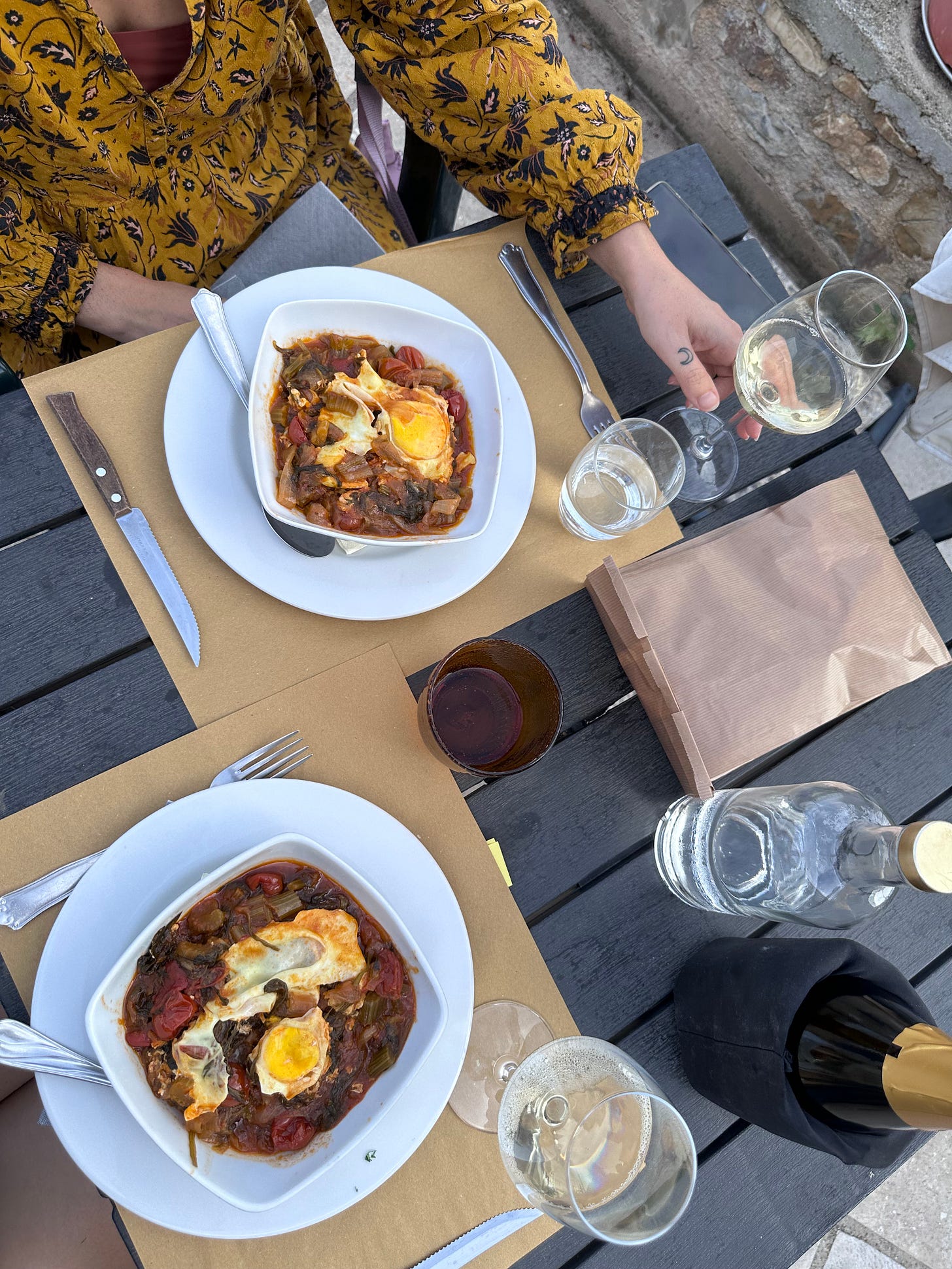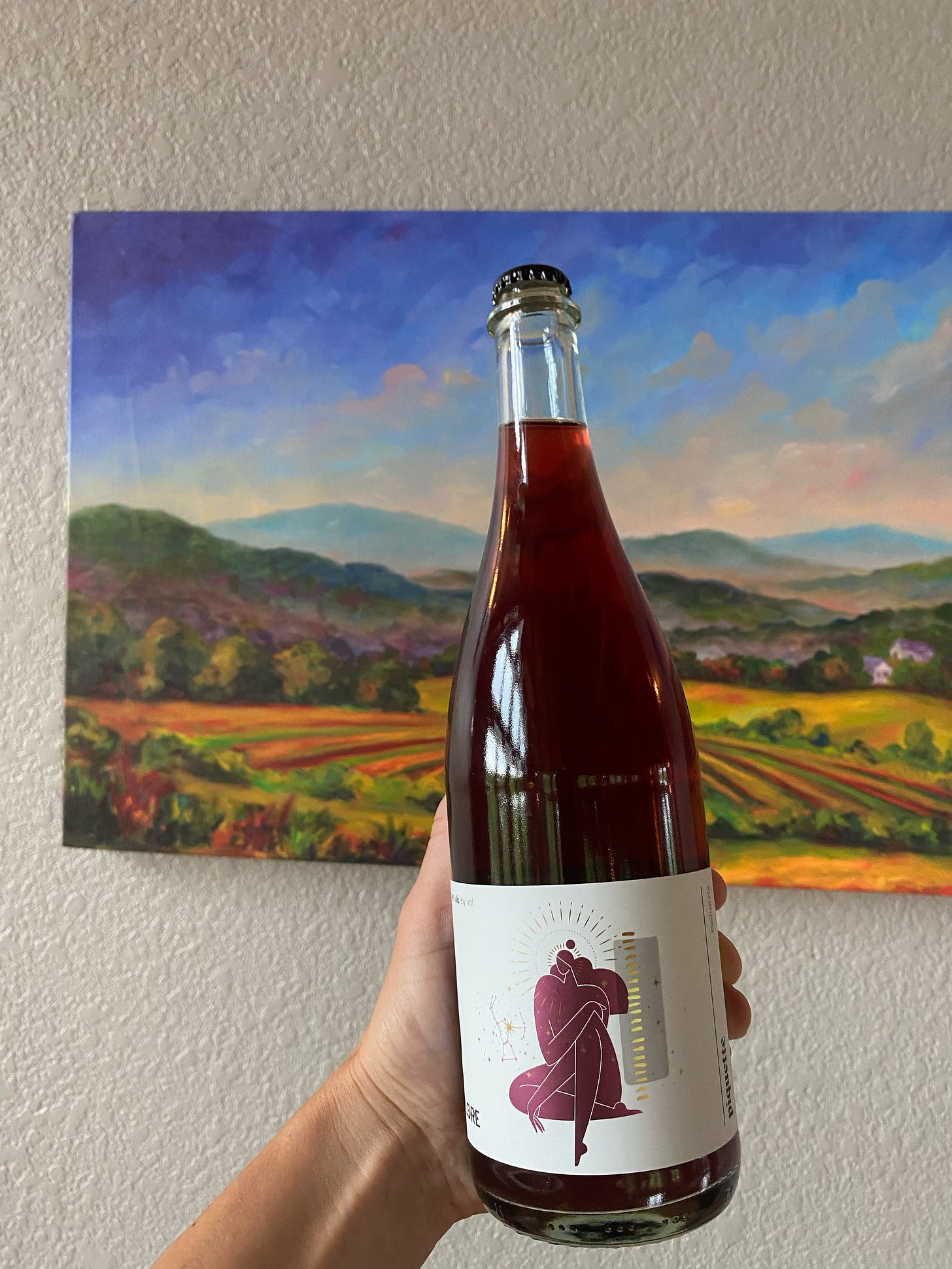The People's Piquette (and other peasant foods we love)
Piquette is the historical drink of the working class—what necessities will mother invention in our time?
Like a swirl of small shells pulled to shore, the tide of the natural wine trend has pulled a style of wine invented by exploited medieval farmhands into fashion today: Piquette. And I love it; don’t you?
First, it’s wildly low in alcohol (as low as 4% in some cases), meaning you can sip and sip and sip without poisoning yourself…yes! Plus, it’s lightly sparkling and easygoing—a true morale boost for the overworked and overwhelmed.
Piquette’s origins belong to an exploited working class of medieval France, the farmhands. It’s made from the pomace—pulp, skins, and seeds—leftover from making wine. Like an underfed server grabbing a slice of untouched pizza off the stand her table left behind, farmhands would add water so the remaining yeast would relent one last fermentation, resulting in a light, session wine that could be consumed all the live long day. Modern winemakers will often add some sugar to encourage a stronger fermentation, and because piquette is sold rather than drunk in the sun with lunch, they also stabilize it so that it’s not spoiled by the time it reaches the consumer.
And so, Piquette joins the endless scroll of peasant foods that find their way into the artisanal, hip corners of food. Next stop is usually fine dining; I don’t know if that will happen with our offensively plain Piquette, but who knows?That list, if you didn’t know, includes caviar, lobster, oysters, quinoa, foie gras, oxtail, sushi, and skirt steak, to start.
I fell in love with a peasant dish called aquacotta on a recent trip to Maremma (southern Tuscany) with my friend Kennedy. Aquacotta gives me the same comfort that chili and chilequillas do: it’s affordable to make, hearty, filling, and perfect for breakfast, lunch, or dinner.
The dish makes use of stale bread, tossing a slice into the bottom of a bowl and adding simmered tomatoes, onions, and a poached egg. There are variations of it throughout Italy, and in keeping with peasant cuisine, whatever else you might have on hand can be added: garlic, potatoes, celery, or foraged herbs and edibles.
I’d pair this dish with Bellatrix, a Piquette made from Chardonel and Chambourcin, weighing in at 10% ABV from Addison Farms Winery in North Carolina. Light bodied, fizzy, berry-flavored, and slightly tannic, the mood of this wine is undistracted and satisfied. It’s a need-meeting wine that balances relaxation with focus, and doesn’t drift too far into either state.
As the war on today’s working class ramps up and foraging for discarded pizza becomes a thing again, I wonder what kinds of inventions necessity will come to mother. Perhaps our innate creativity will lead us to answering questions like: How can we organize within our restaurant industry so that people who want to put their bodies on the front lines of the resistance can do it without jeopardizing their livelihood?
Can we cover for each other? When our industry professionals are detained by ICE outside church, chased through fields at work, or kidnapped by unidentified, masked men, can we raise funds to bail out the people who are in the streets fighting to defend them?
People are mobilizing for a general strike. Research shows that the movement needs 3.5% of the population to be successful. You might have some coworkers or employees on your team who want to participate. How can we restructure our workplaces so that anyone wanting to run toward the fire can be empowered and supported?
Often, planned rallies are scheduled for weekends, ie. during service industry shifts. Who can step in and carry extra weight to cover for an employee who wants to show up? Can the owner agree to pay them (to some degree) and can the team tip them out anyway? If you’re not working under supportive leadership, can you and your work friends cover each other and occasionally split your tips for the day, meal share, or be on standby to ensure that you return safely from a rally?
If none of that works for your specific situation, can you meet with work friends over a bowl of peasant-conjured food and a bottle of Piquette and brainstorm how to creatively organize in a way that does?
Asking for a friend.








I live in a very poor working class area south of Rome and people are still foraging and making vino contadino and whatever they can do to not waste. I love my neighbors, they have such a wealth of information that will help our community survive when WWIII starts.
The name of my Substack means peasant. Even though hipsters try to capitalize on these foods, when shit goes down, they won't know how to till the land or sow a seed, they can only buy the real stuff from the people who are on the land. That's who you should have as neighbors. Hunters, farmers, and gatherers, plumbers, electricians and bakers.
👏🏻👏🏻👏🏻